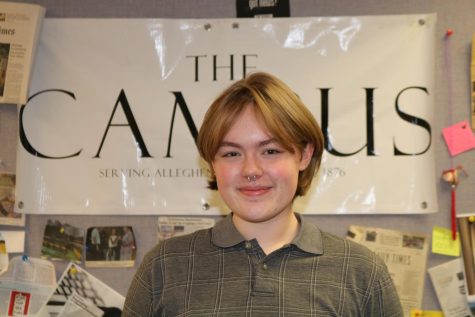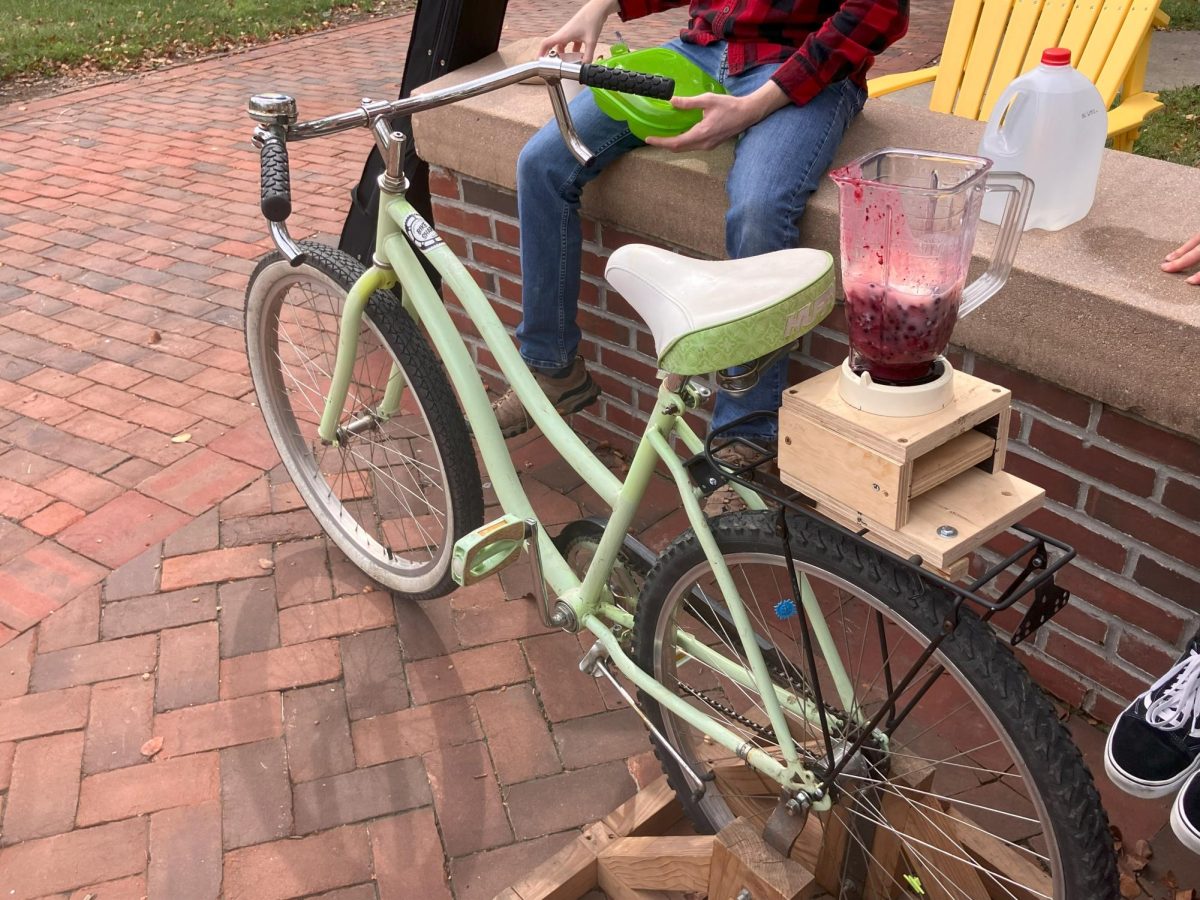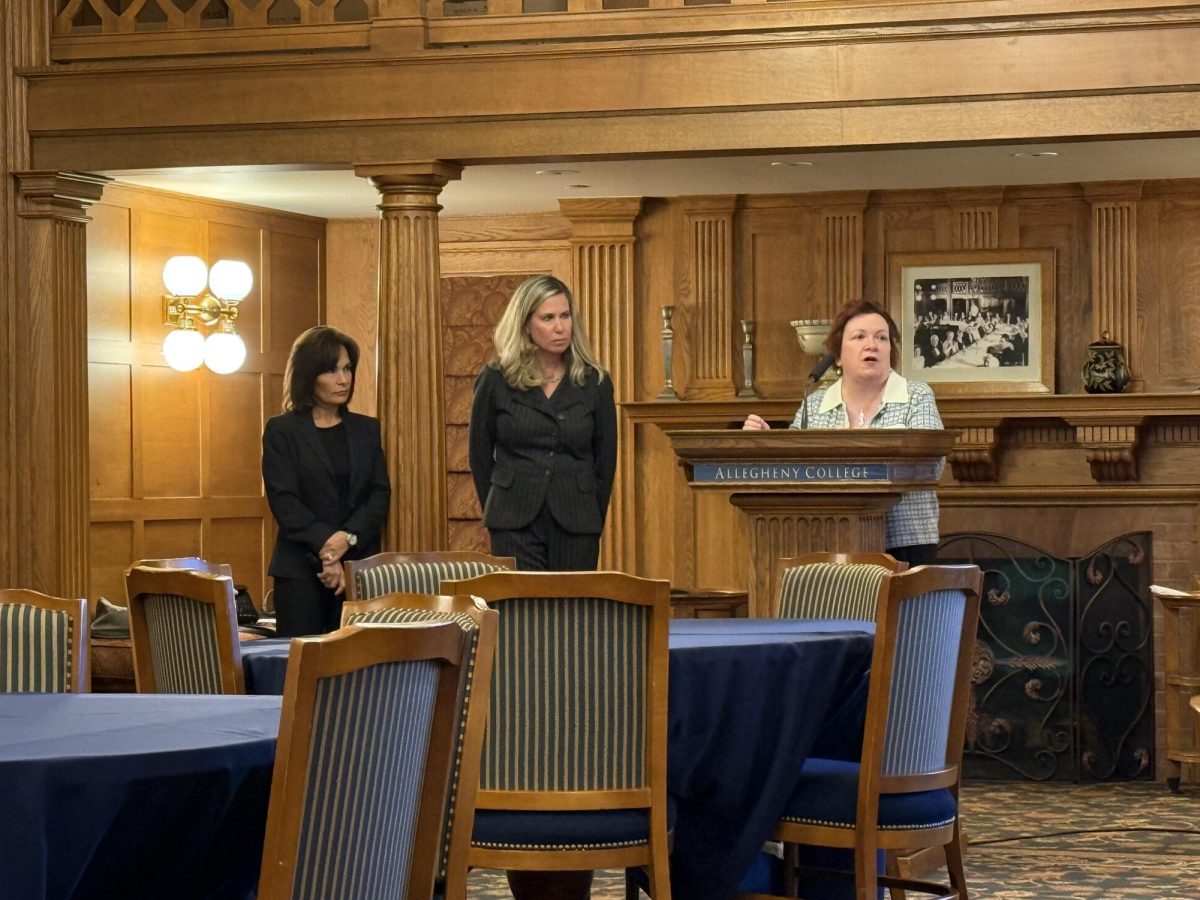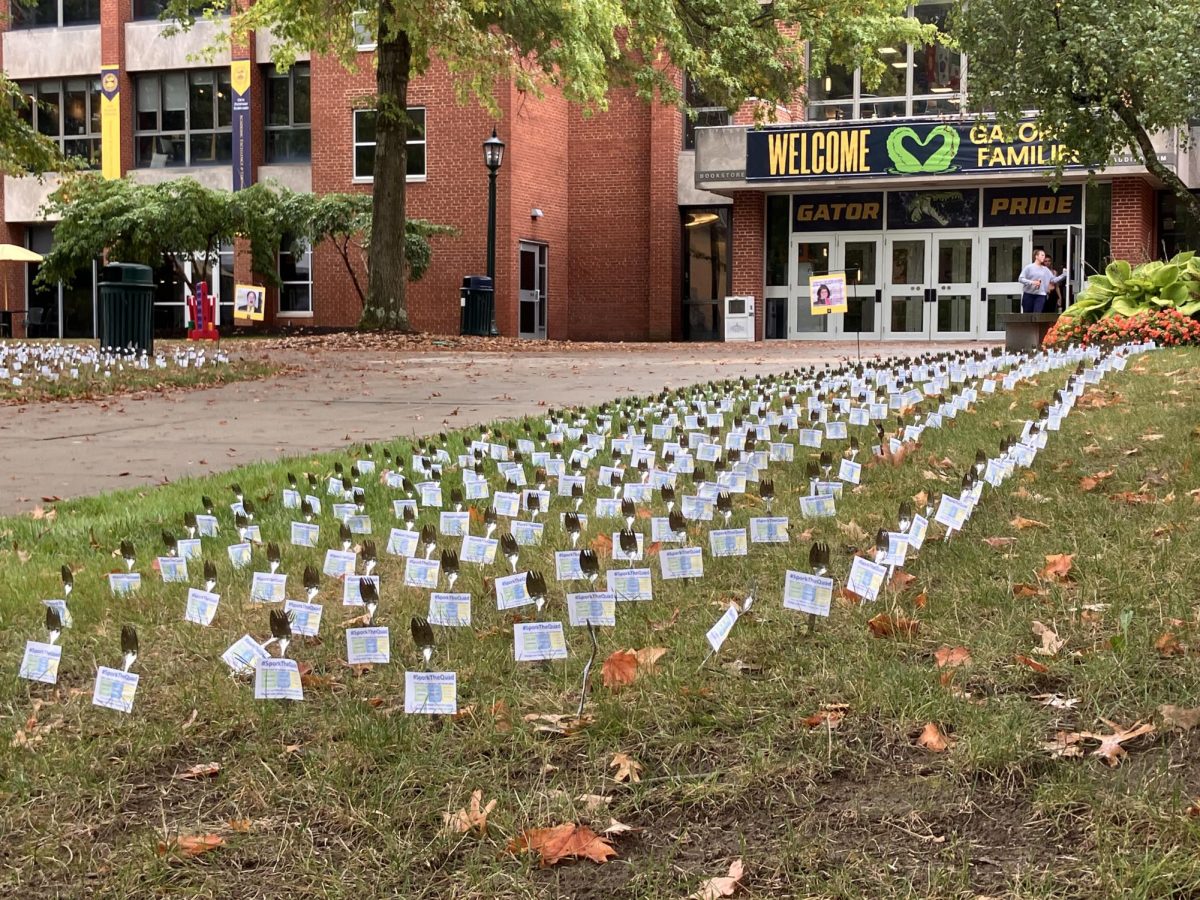Allegheny College was recently recognized by the U.S. Department of Energy for achieving the 2023 Better Building Challenge as part of the college’s energy-saving initiative. Allegheny was one of only 21 higher education institutions nationwide committed to the challenge, and was one of just four to actually achieve the goals of the challenge, according to an Oct. 24 press release from the college.
Director of Sustainability Kelly Boulton, ’02, represented the college alongside other sustainability leaders at a summit in Washington D.C. hosted at the Eisenhower Executive Office Building on Oct. 23.
“I think we (Allegheny) stand out because all along we’ve set ambitious goals, but then we’ve actually followed through on them— we haven’t backed down,” Boulton said.
Allegheny became involved with the Better Building Challenge in 2011 when the Obama administration sought to measure efficiency and sustainability across various sectors. The Better Buildings Challenge works with leaders in the public and private sectors “to make the nation’s homes, commercial buildings, and industrial plants more energy-efficient by accelerating investment and sharing successful best practices,” according to the Department of Energy’s website. Boulton explained that the college was already doing the work that would stand out in the challenge at the time, starting with a commitment in 2007 to measure greenhouse gas inventories, followed by a Climate Action Plan adopted in 2009. Allegheny was noticed for its own sustainability initiatives, which could inspire other institutions to implement similar strategies.
“We were on their radar because we were already doing that work,” Boulton said.
A large part of the Climate Action Plan was looking at what spaces are being used on campus and reimagining the spaces that were less used. Oddfellows and Caflisch Hall were among the buildings on campus that were deemed less efficient. Caflisch was demolished in August.
“Several years ago we did a strategic plan in which we did a space study of campus to think about how much square footage do we need per student, like in residence halls, in academic buildings,” Boulton said. “What we found is that we have far more square footage than we really need. And so, in that process we did a lot of looking at, ‘What are the buildings that we have that maybe aren’t serving us the best?’”
After looking at what spaces cannot continue to serve a purpose for the college, the next step of the action plan was rethinking the spaces that are still useful.
“Reduce as much as you can, change your energy purchasing, and then we’ve also decarbonized some of our buildings,” Boulton said.
Boulton explained that the work of reducing emissions has been collaborative, with input from the college’s cabinet as well as resources from Physical Plant.
“Physical Plant is a huge partner to think about how we’re heating our buildings, how we’re insulating our buildings, how we’re lighting our buildings — all of the different operational decisions that have sustainability components,” Boulton said.
After that work was done, the focus turned to offsetting whatever emissions remained.
“Students still drive to campus at the beginning of the semester, we still have business travel, we still are heating some of our buildings with natural gas,” Boulton said. “We purchase carbon offsets, which is essentially investing in projects that are going to take an equivalent amount of energy or emissions out of the atmosphere so that we are equalizing our remaining emissions by doing positive things elsewhere.”
However, the work of carbon neutrality does not end there.
“Carbon neutrality is not a static thing,” Boulton said. “You have to work to continue to be carbon neutral and, ideally, even if you’re carbon neutral, you’re continuing to reduce your carbon footprint and therefore the amount of carbon offsets you have to purchase.”
Allegheny College achieved carbon neutrality on-schedule in 2020. It also reduced overall emissions by 22% over 10 years, according to the Oct. 24 press release. Boulton explained that this was helped in large part by a dedicated staff and engaged students.
“I think it also does not hurt at all that we have a really, really long-standing, amazing environmental science department that we collaborate with all the time,” Boulton added.
The summit was Allegheny’s chance to tell the DOE what is and is not working when it comes to sustainability. Among those in attendance were Secretary of Energy Jennifer Granholm and White House National Climate Advisor Ali Zaidi.
“The White House, the Department of Energy are like, ‘You are doing a good job, it’s working, help us learn from you so we can amplify this work with others’ — and I think that’s a big deal for this tiny little college in northwestern Pennsylvania to be recognized,” Boulton said.
Categories:
Allegheny recognized by DOE for commitment to sustainability
Director of Sustainability Kelly Boulton, ’02, (third row from bottom, second on left) stands on the steps of the Eisenhower Executive Office Building in Washington D.C. with other sustainability leaders while being recognized by the U.S. Department of Energy for achieving the 2023 Better Building Challenge.
Story continues below advertisement
0
Tags:
More to Discover
About the Contributor

Sam Heilmann, Opinion Editor
Sam Heilmann is a sophomore from Johnstown, PA. She is majoring in Communications. This is her second year on the Campus staff, and her first as Opinion Editor. When she isn't writing for The Campus, she enjoys painting, listening to music and spending time with her friends.












